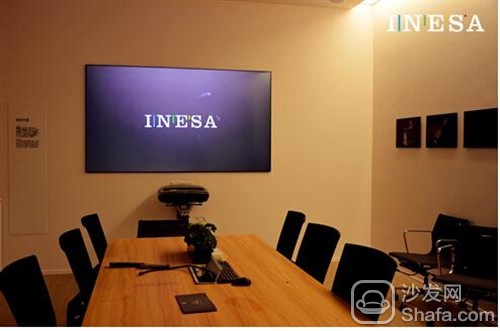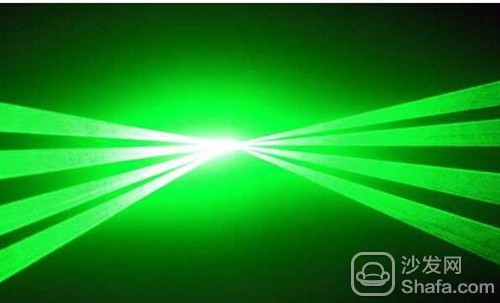Laser technology has been applied to various fields since its emergence, especially in the medical industry, laser technology has been widely used. In the television industry, the term "laser television" has been raised for some time but has not been well marketed. The main reason for this is that some technical problems have not been overcome, resulting in laser televisions that are not satisfactory in terms of imaging effects and cost control.
At present, consumers place higher demands on the screen brightness, display effect, and service life of large-screen display technologies. The liquid crystal display technology has little room for growth above 100 inches, and the larger the size, the more the cost will increase geometrically. Based on this, industry experts are generally optimistic that laser display technology will gradually replace LCD TVs in the high-end TV market of large screens, becoming another epoch-making mainstream display technology in TV history. Some experts predict that in 5-10 years, laser television will enter the average family, and the annual output value of the laser television industry will reach several hundred billion yuan.
In 2014, China's first consumer electronic manufacturer, Instrument Electronics (INE), successfully applied laser technology to televisions in China, and listed the world’s first 3D smart laser TV—INESA smart laser television. As an emerging and cross-border product for consumer electronics, the INESA smart laser video camera is dedicated to enabling consumers to enjoy the exciting life brought about by science and technology, and has formed a huge impact on the current TV market.
 INESA smart laser television broke through the size of the traditional TV with its 100-inch large screen, giving people a strong visual impact. What is more important is that this INESA smart laser video camera is different from the traditional TV. It separates the light source from the screen for the first time, and uses a laser light source to transmit the light beam through an ultra-short focusing mirror to project the light beam onto a 100-inch screen without a light source. And to form a high-definition picture of 1920×1080, the problem of black spots and smears of traditional LCD TVs is also solved by this principle. At the same time, this reflected light is more in line with human visual habits, can play a role in protecting the eyes, preventing some of the eye diseases caused by TV radiation, and is truly intelligent and green.
INESA smart laser television broke through the size of the traditional TV with its 100-inch large screen, giving people a strong visual impact. What is more important is that this INESA smart laser video camera is different from the traditional TV. It separates the light source from the screen for the first time, and uses a laser light source to transmit the light beam through an ultra-short focusing mirror to project the light beam onto a 100-inch screen without a light source. And to form a high-definition picture of 1920×1080, the problem of black spots and smears of traditional LCD TVs is also solved by this principle. At the same time, this reflected light is more in line with human visual habits, can play a role in protecting the eyes, preventing some of the eye diseases caused by TV radiation, and is truly intelligent and green.
 In addition to the above advantages, it can also achieve multi-screen interaction. Computers, mobile phones, PADs, etc. can all be connected to TVs. Various applications make it possible to cope with a variety of scenarios, home theater, home entertainment, business meetings, shopping mall advertisements, etc. can be applied very effectively. More extensive than traditional television applications.
In addition to the above advantages, it can also achieve multi-screen interaction. Computers, mobile phones, PADs, etc. can all be connected to TVs. Various applications make it possible to cope with a variety of scenarios, home theater, home entertainment, business meetings, shopping mall advertisements, etc. can be applied very effectively. More extensive than traditional television applications.
 In fact, before this, there were many companies that had developed laser televisions, but they were almost nothing. The successful launch of the INESA smart laser video camera is not only an innovation in technology and technology, but also brings innovation in the family experience. It is believed that in the near future, laser television will become a new trend, bringing a new climax to the TV industry that has been quiet for a long time.
In fact, before this, there were many companies that had developed laser televisions, but they were almost nothing. The successful launch of the INESA smart laser video camera is not only an innovation in technology and technology, but also brings innovation in the family experience. It is believed that in the near future, laser television will become a new trend, bringing a new climax to the TV industry that has been quiet for a long time.
Although the development time of laser television is not long, the technology of laser television is continuously improving. Of course, we also hope that we can see more advanced and intelligent laser television products on the market as soon as possible, with its more excellent display effect and more outstanding Saving power and better cost-effectiveness benefit the majority of TV users.

In 2014, China's first consumer electronic manufacturer, Instrument Electronics (INE), successfully applied laser technology to televisions in China, and listed the world’s first 3D smart laser TV—INESA smart laser television. As an emerging and cross-border product for consumer electronics, the INESA smart laser video camera is dedicated to enabling consumers to enjoy the exciting life brought about by science and technology, and has formed a huge impact on the current TV market.



Although the development time of laser television is not long, the technology of laser television is continuously improving. Of course, we also hope that we can see more advanced and intelligent laser television products on the market as soon as possible, with its more excellent display effect and more outstanding Saving power and better cost-effectiveness benefit the majority of TV users.
Recommended installation sofa butler, download address: http://app.shafa.com/

